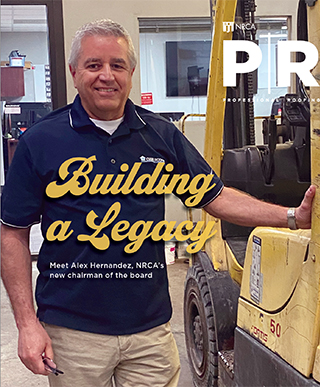
Promotions can be tricky. I’m not talking about advertising promotions; I’m talking about giving lower-level employees more responsibility.
As employers, we often assume because an employee is good at “X” he or she will be equally good at “X+” or “Y.” But as many of us have experienced, this is not a given. X+ is what the employee was doing previously but with an added aspect, higher level of skill or responsibility. Y is something totally different!
Your best shingle installer may not have what it takes to be a good foreman. The jobs are totally different, but often one position segues to the next. An expert installer may not be able to effectively lead a team or work with customers. Managing a team, customers and logistics are wildly different tasks from quickly and efficiently putting down squares.
Employers often promote the person that is “next in line,” and that works because it’s easy and efficient in the short term. You avoid difficult conversations that come with skipping over someone. You have the employee right there, ready to go, and no searching or interviewing are required. New title + new responsibility = problem solved!
You may be familiar with the term “the Peter principle.” It is a business management concept that says people are essentially promoted until they reach a level at which they are no longer competent.
The Peter principle is expressed as: “In a hierarchy, every employee tends to rise to his level of incompetence. … In time, every post tends to be occupied by an employee who is incompetent to carry out his duties.” Employees are promoted based on their success in previous jobs, but skills in one job do not necessarily translate to another.
Harsh? Yes, but in a world with a mindset of “next in line,” it’s not entirely off-base.
So how do you kick Peter to the back of the line and have a process of deliberate, successful career advancement for your team?
Clear assessments of a new role’s responsibilities, an individual’s strengths and weaknesses, and skills gaps he or she is potentially bringing to the new role are vital.
An installer may have the technical skills and attention to detail to excel in that role, but does he or she have the leadership skills to run a crew?
I have heard many instances in which senior leaders in roofing companies self-promote themselves into being contractors. They leave their current workplaces to start their own roofing companies. Many times, these individuals painfully learn they may be terrific foremen or superintendents but struggle as business owners. The skills they honed and excelled at in their old jobs do not translate to the roles they created for themselves. Often, their businesses fail, and they return to being amazing employees in someone else’s shop.
The potential risks of the Peter principle shouldn’t mean you don’t promote from within. Looking to your current team is the most logical first step. And often, those individuals are looking to move up, as well, because most people want new challenges, growth and greater fulfillment from their work. (It’s why these employees go out and start their own companies!)
If companies have no internal path for advancement and career development, employees may start looking elsewhere for the growth they seek. Providing opportunities for professional development is key to keeping your best employees on your team.
Regardless of who you decide to promote, it’s on you to help set them up for success versus throwing them to the wolves of failure. If you believe someone may be right for the job, more often than not a key aspect of success versus incompetence can lie in training for soft skills.
Proactively working with employees on skills gaps between an old role and new position becomes essential because as someone moves up the organizational ladder, technical skills remain important but less so. The new role requires new skills, and leaders depend on those below them to backfill the technical expertise required in their previous roles.
Bill Gates was likely not the best programmer at Microsoft when he left. He likely hadn’t been for decades. This is true in almost every hierarchical organization.
For example, while watching a roofing competition, a contractor leaned over and told me: “I could do that; it would take me three times longer than these guys, but I could do it.” The skills he had in his previous role began to atrophy as he used new skills in his new role. The reverse also is true. Just as disclaimers on investments say “past performance is no guarantee of future results,” this is true when a person is moving into an entirely new position with new requirements.
Marcel Schwantes, an executive coach, makes this point in an Inc. article where he states: “One of the biggest misconceptions organizations have when determining future managers and leaders is that top technical performers, who were great individual contributors, will naturally become great leaders. In reality, the role of a leader requires a completely different skill set, especially when addressing interpersonal challenges.”
I believe my 16-year-old son is one of the most confident people on the planet. He does well in school and sports when he wants to, is self-assured and works just hard enough to reach his goals. When he was around 6 years old, he told us he was done with tennis lessons because he knew everything there was to know about it and was the best. So he’s confident but perhaps occasionally misguided!
But watching him embark on driving a car has been fascinating. This confident young man, occasionally brash in nearly every other realm, is cautious, timid, forgetful and mediocre at driving. He’s not a bat-out-of-hell teenage driver; he’s more like a 78-year-old grandmother lost in a new town. It’s terrific from a parent’s perspective! But it is another reminder how skill sets differ. He has to learn, practice, be coached and grow.
Your employees may be in the same boat with whatever new, foreign role you’re throwing them in. Pride or self-confidence may keep them from asking the questions that need to be asked, so be sure to provide the proactive coaching and training they need. Be sure to equip them to succeed. Just because they have been awesome in their past roles doesn’t mean their new ones will be easy.

MCKAY DANIELS
CEO
NRCA



